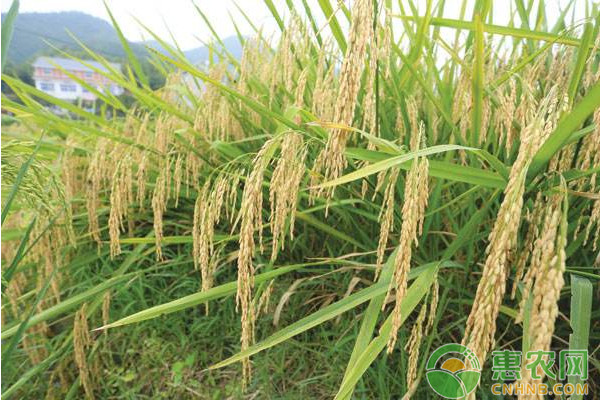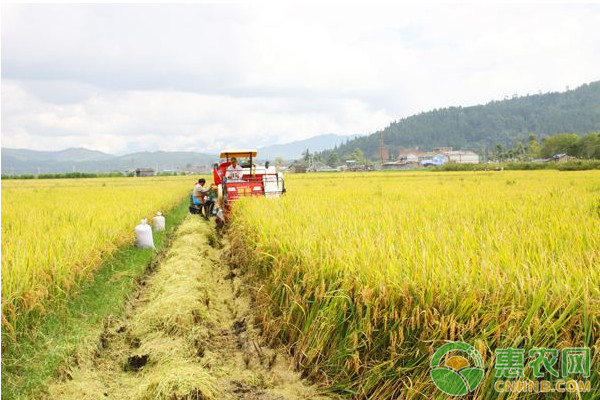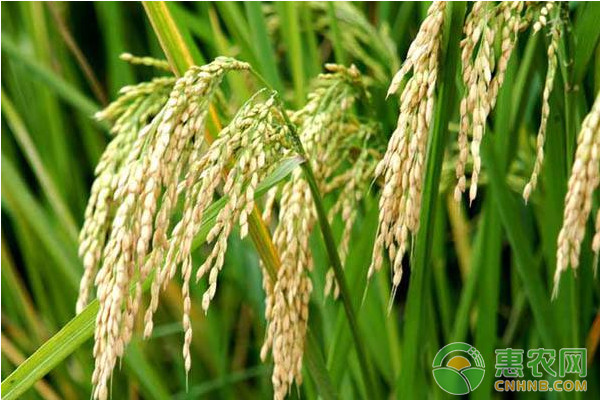Rice Planting Classroom: Five Measures for Late Rice Management
Farmers' friends know that the late rice heading and flowering stage is the key period to determine the yield. The photosynthetic capacity after heading is an important factor in determining grain yield. Therefore, the later management is the key to high yield of late rice. Let's look at the five major measures that require special attention. 1 to prevent premature aging After the heading of late rice, the leaves are no longer rooted, and the vegetative growth basically stops. According to the measurement, 90% of rice yield is formed by photosynthetic products after heading. If the management is not proper in the later stage, there will be premature aging phenomenon of “more than enough ears, insufficient fruiting, more stamina and less staminaâ€. Therefore, in order to increase the seed setting rate and increase the 1000-grain weight in the late rice, it is necessary to work hard to manage the roots and protect the leaves and prevent premature aging. During the growth period, late rice experienced the high temperature and drought in the early stage and the long water filling process. The fertilizer loss was large and the loss was much. After entering the ear grain stage, most of the leaves were old, especially the application of phosphorus and potassium fertilizer would affect the big ear. Formation and increase in grain weight. Therefore, management should pay attention to the application of flower fertilizer and granular fertilizer. The flower-preserving fertilizer should be applied at 0.5~1 leaves of the main stem, and the ternary compound fertilizer with a high concentration per acre is generally 7.5~10kg. It is better to apply the grain fertilizer at the same time, and apply 5~7.5kg of urea per acre to the field with old leaf color; 5~7.5kg of high-concentration ternary compound fertilizer per acre for the field with normal leaf color. At the beginning of the heading stage and the heading stage, 150 g of potassium dihydrogen phosphate and 500 g of urea per acre were used, and 50 kg of water was added, and foliar application was carried out on a sunny afternoon or cloudy day. Through these managements, the heading can be tidy, the vitality of roots and functional leaves can be improved, the premature aging can be effectively prevented, the nutrient requirements of heading and grouting can be met, and the purpose of preserving big ears and increasing grain weight can be achieved, and the yield of late rice can be improved. 2 to prevent gluttony and late maturity During the growth of late rice, some nitrogen fertilizers are applied. Phosphorus and potassium fertilizers combined with insufficient application of seedlings are prone to flag leaf drape and leaf color dark green, which not only reduces the seed setting rate of late rice growth, but also forms a large amount of open space and reduces 1000-grain weight. It is extremely unfavorable for improving the yield of late rice. In addition, due to excessive nitrogen in this type of late rice paddy, the absorption of rice plants will cause the plant cell space to be too large, which will easily cause the lodging of late rice plants, and the degree of siliconization will reduce the number of diseases and insects, and then increase the number of prevention and control. And increasing the use of pesticides, resulting in late rice pollution, and will increase the late-maturing and late maturity of late rice plants, so that rice quality and yield will be seriously affected. For this part of late rice, measures such as dewing water, increasing exposure time, and spraying potassium dihydrogen phosphate may be adopted in the later stage to prevent late rice from being late. The dew is used to gently rush the dew on the leaves every morning with bamboo rafts for 5~6d; when spraying the potassium dihydrogen phosphate on the foliar surface, spray 200g with 50kg per acre for 1~2 times. It can promote the late rice and strong seeds and increase the 1000-grain weight. 3 Prevent premature dehydration Practice has proved that the function of the leaves is closely related to the vitality of the roots. Only by raising the roots can the leaves be protected, and the key to rooting is to adhere to the management of the wet. Therefore, after the late rice cultivar, the water can not be cut off too early, must be wet irrigation, dry and wet, dry and wet alternate, water and gas, in order to maintain the roots of strong absorption and water absorption capacity, through the roots and leaves to achieve grain increase Heavy purpose. The specific practice is: adhere to the "horse water" after the heading period, that is, to pour water for 2~3d, let the water fall naturally and then pour water once, so as to keep the soil moist until the yellow ripe. Generally, 5~7 water loss before the harvest will promote the ripening, and it is forbidden to cut the water too early, so as not to affect the fullness of the grain. 4 Prevention of pests and diseases Late rice growth is susceptible to sheath blight, rice blast and rice leaf roller and rice planthopper, which is the focus of pest control. In the prevention and control, we should master the appropriate period, select the pesticides for the mouth, pay attention to the prevention and control methods, and improve the control effect. The control of sheath blight should be used during the booting to heading stage. Each acre can be sprayed with 5% Jinggangmycin water 100m L or 20% powder 30~40g, 50~70kg water. Most of the rice blast disease in the neck is more serious in the hilly areas with higher humidity, especially the susceptible varieties. If the continuous rainy rain is more likely to occur after heading, the prevention should be based on prevention, and the first medicine should be used during the breakage period. A second dose is given at the earing stage. If it is especially popular during the rainy year, the third dose should be added. At present, the effective agents for controlling rice blast are: 100g of tricyclazole per acre, or 150g of Fuji No. 1 and 60kg of water, which can effectively control the damage. The rice blast can be combined with the control of sheath blight. The spray point of the spray should be fine and not thick, and the dosage of the liquid per acre is not less than 50kg. Add a few drops of Tween-80 as an emulsifier in the liquid, which can increase the adhesion of the liquid on the plant and improve the effect of the drug. There are many effective agents for controlling rice leaf roller, and you can use Kangxi 20% chlorantraniliprole suspension 400 times solution, or 48% lesbian emulsifiable oil 2000~3000 times solution, or 15% escapement emulsifiable concentrate 80m L. Water 60kg spray control. The control of rice planthopper can be used to control the rice planthoppers per acre or to kill 20kg, and 75kg spray with water. When the rice planthopper occurs in the late rice late stage, it can be prepared by using a syrup and using a high-pressure sprayer to align the base of the seedlings. Thick spot spray, good effect of drug killing. 5 defense against cold wind Cold dew is a major disastrous weather in the production of late-season rice in southern China. The main hazards are caused by poor heading and necking; poor pollination and increased emptying rate; cold winds in the filling stage, which hinder the filling speed, affecting the filling and firming, reducing the 1000-grain weight, increasing the open rate, seriously affecting the late rice, especially Hybrid late rice yield. To prevent cold winds, the first is to do a good job in cultivation management, increase the application of phosphorus and potassium fertilizers, and improve the cold resistance of plants. Before the arrival of the cold dew wind, the 7~10cm deep water insulation can be applied, and the foliar fertilizer or the planting wood ash can be sprayed to compensate for the insufficient nutrient absorption of the roots during the cold dew and enhance the cold resistance. In addition, the vegetation ash also has the effect of increasing the temperature of the mud table and the temperature of the ear. Followed by the late rice that can not be safely harvested before the arrival of the cold dew wind, the plant growth regulator "9:20" 1g per acre, sprayed with 50kg of water, to promote the early heading, spraying time to the front of the 6~ 7d is good. For the seedlings that have not been stalked after the cold dew wind, in addition to spraying a 0.2% potassium dihydrogen phosphate liquid fertilizer, it should also be sprayed once "9:20" to prevent late rice "card neck". When it encounters dry and cold type cold dew, the water spray can be moisturized. The dry and cold type cold dew wind can increase the humidity between the plants and the ear and promote the flowering and fruiting due to the relatively small air humidity and high wind speed. The water spray should be carried out before and after flowering, usually 2 times a day. When spraying water, pay attention to the spout facing upwards, so that the water drops from the top. The five key measures for late rice management are introduced today. I hope that you can help the grain growers. You must seize this opportunity to manage. Biologics are drugs made from complex molecules manufactured using living microorganisms, plants, or animal cells.Anti-rabies Vacine for Human is a preparation of rabies fixed virus CTN-1V inoculated into Vero cell , which is used for the prevention of the rabies disease. Biological Product,Rabies Symptoms Human,Human Rabies Symptoms,Human Rabies Signs Changchun Zhuoyi Biological Co., Ltd , https://www.zhuoyibiological.com

